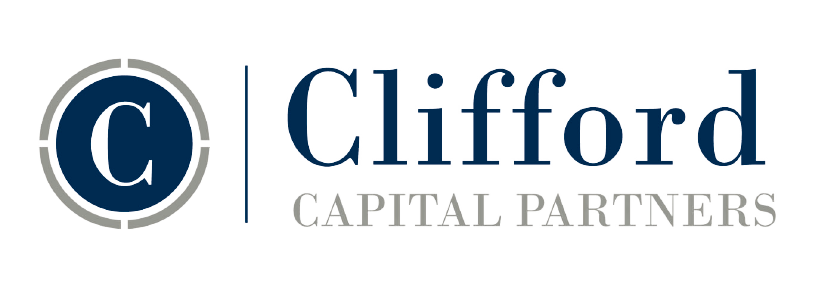International Value
Strategy Overview
HIGHLIGHTS
We Believe that the blend of Core and Deep Value companies provides alpha potential with a less volatile return stream compared to Deep Value only investors
- Core Value: highest quality, strong return profiles, sustainable competitive advantages, and strong management teams
- Deep Value: negative market sentiment, defensible franchise value, and high expected return potential
INVESTMENT APPROACH
We use a bottom-up approach that seeks to identify businesses where expectations are irrationally low, leading to significant undervaluation, based on our independent research. Both Core and Deep Value companies exhibit:
- Strong balance sheets
- Market overreaction short-term events
- Key Thesis Points™ (long-term catalysts) that will improve fundamentals
Primarily invests in a non-US Large Cap companies with market caps of greater than $10 billion at the time of purchase.
Concentrated portfolio of 25-45 positions
Quick Look
as of 9/30/2025
Total Assets
Separate Accounts
$1.0 mm
Model Delivery
$0.0 mm
Total
$1.0 mm
Inception Date
8/01/2019
Separate Account Minimum
$2mm
Primary Benchmark
MSCI EAFE Index
Investment Team

James Harper, CFA
PORTFOLIO MANAGER

Roger Hill
PRESIDENT & CEO, PRINCIPAL

Allan Nichols, CFA
PORTFOLIO MANAGER, PRINCIPAL
Performance
as of 9/30/2025
Calendar Year Returns
as of 12/31/2024
No Data Found
International Value Portfolio vs. Benchmark
Since inception
as of 9/30/25
No Data Found
Annualized Returns
Performance Statistics
as of 9/30/2025 Since Inception (8/1/2019)
Top 10 Holdings
as of 9/30/2025
Company
IV
Banco Santander
5.0%
Kering
4.0%
Barry Callebaut
3.6%
Fresenius Medical Care
3.4%
Smith & Nephew
3.4%
Fuji Electric
3.4%
Alstom
3.2%
STMicroelectronics
3.2%
Koninklijke Philips
3.0%
Heineken
2.9%
Country Weights, Ex-Cash
as of 9/30/2025
No Data Found
Sector Allocation
as of 9/30/2025
No Data Found
Characteristics
as of 9/30/2025
IV
EAFE
Number of Holdings
38
693
Wtd Avg Mkt Cap
$64.5 B
$100.6 B
Median Market Cap
$32.9 B
$19.5 B
Price / Earnings (trailing)
16.3
18.0
Price / Cash Flow
1.2
10.0
Price / Book
1.3
2.1
Turnover (LTM)
44.6%
n/a
Active Share
89%
0%
Commentary & Literature
Important Disclosures
Information about Risk
Investing in the securities of small-cap and mid-cap companies generally involves substantially greater risk than investing in larger, more established companies. Because the strategy invests primarily in value stocks (stocks that the manager believes are undervalued), the portfolio’s performance may at times be better or worse than the performance of strategies that focus on other types of stock strategies (e.g., growth stocks), or that have a broader investment style.
The strategy generally holds stocks of between only 25 and 45 companies. The strategy may invest a larger portion of its assets in the securities of a single issuer compared to a more diversified strategy. Focusing investments in a small number of companies may subject the strategy to greater volatility and therefore a greater risk of loss because a single security’s increase or decrease in value may have a greater impact on the portfolio’s value and total return.
Portfolio Characteristics
Price/Earnings Ratio (trailing): Sum of stock prices of the fund’s holdings divided by the aggregate earnings per share of those holdings for the past 12 months, calculated as a weighted harmonic average. Price/Book Ratio: weighted average of the stocks’ price divided by book value per share. Book value per share is defined as common equity, including intangibles, divided by shares outstanding times the adjustment factor. Price/Cash Flow Ratio: a ratio used to compare a company’s market value to its cash flow. It is calculated by dividing the company’s market cap by the company’ operating cash flow in the most recent fiscal year (or the most recent four fiscal quarters); or, equivalently, divide the per-share stock price by the per-share operating cash flow. Median Market Cap: the midpoint of market capitalization of the stocks in a portfolio. Half the stocks in the portfolio will have higher capitalizations; half will have lower. Market Cap is the aggregate value of all of a company’s outstanding equity securities. Dividend Yield: a financial ratio (dividend/price) that shows how much a company pays out in dividends each year relative to its stock price. Active Share is a measure of the percentage of stock holdings in a manager’s portfolio that differs from the benchmark index.
Performance Statistics
Alpha measures a portfolio’s risk/reward potential. A positive alpha means the fund outperformed the index. A negative alpha means the portfolio underperformed the index. Beta measures a portfolio’s risk in relation to the market. A beta of 0.8 means the portfolio’s total return is likely to move up or down 80% of the market change; 1.25 means total return is likely to move up or down 25% more than the market. R-Squared measures (from 0 to 1.0) how closely a portfolio’s movements are correlated with movements of its benchmark. An R-squared of 1.0 would mean that the portfolio’s movements are completely correlated with the movements of its benchmark. Standard Deviation measures the degree to which a portfolio’s performance has varied from its average performance over a particular time period. The greater the standard deviation, the greater a portfolio’s volatility (risk). Upside Capture explains how well a portfolio performs in time periods where the benchmark’s returns are greater than zero. Downside Capture explains how well a portfolio performs in time periods where the benchmark’s returns are less than zero. Sharpe Ratio calculates the amount of portfolio return in excess of the risk-free rate per unit of risk (standard deviation) taken by the portfolio. Sortino Ratio calculates the amount of portfolio return received in excess of the risk-free interest rate per unit of “downside” risk (standard deviation of negative returns) taken by the portfolio. Information Ratio is used to evaluate the skill of a portfolio manager at generating returns in excess of a given benchmark. A higher information ratio result implies a better portfolio manager who’s achieving a higher return in excess of the benchmark, given the risk taken.
MSCI EAFE Index is a stock market index made up of two acronyms. MSCI is for Morgan Stanley Capital International, a reputable financial organization that provides stock market indexes and tools. EAFE stands for Europe, Australasia (the region made up of Australia and New Zealand), and the Far East. The MSCI EAFE Index is designed to represent the performance of large and mid-cap securities across 21 developed markets, including countries in Europe, Australasia and the Far East, excluding the U.S. and Canada. The Index is available for a number of regions, market segments/sizes and covers approximately 85% of the free float-adjusted market capitalization in each of the 21 countries. The Index is widely used as a benchmark and as the basis for index-linked financial products. MSCI EAFE Index does not accept any liability whatsoever to any person arising out of (a) the use of, reliance on or any error in the Index or (b) investment in or operation of the Fund or Separate Account. MSCI EAFE Index makes no claim, prediction, warranty or representation either as to the results to be obtained from the Fund or Separate Account or the suitability of the index for the purpose to which they are being put by Clifford Capital Partners.
